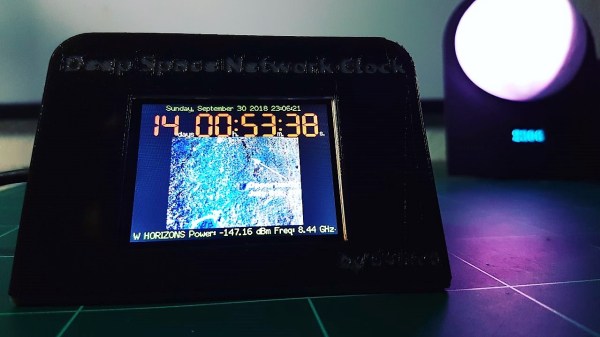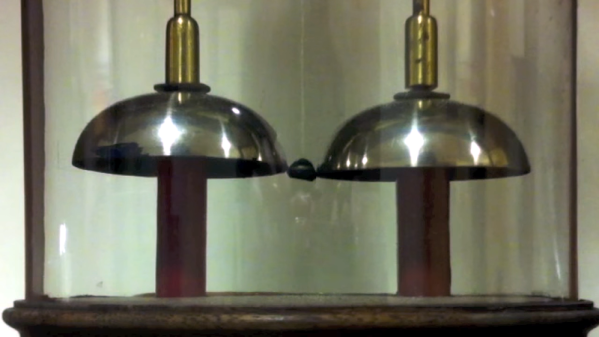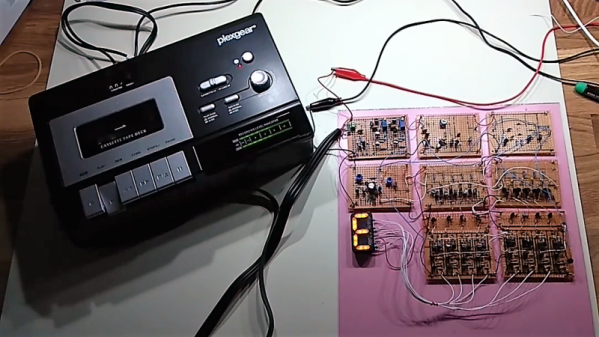It’s been a long, long time since we heard from Opportunity, the remarkable Mars rover that has shattered all expectations on endurance and productivity but has been silent since a planet-wide dust storm blotted out the Sun and left it starved for power. Right now, it’s perched on the edge of a crater on Mars, waiting for enough sunlight to charge its batteries so it can call home. All we can do is sit, and wait.
To pass the time until Opportunity stirs again, [G4lile0] built this Deep Space Network clock. Built around an ESP32 and a TFT display, the clock monitors the Deep Space Network (DSN) website to see if mission control is using any of the huge antennas at its disposal to listen for signals from the marooned rover. If the DSN is listening, it displays a special animation exhorting the rover to phone home; otherwise, it shows which of the many far-flung probes the network is communicating with, along with a slideshow of Mars mission photos to keep the spirits up. When the day finally comes that Opportunity checks in, an alarm will sound so [G4lile0] can pop the champagne and celebrate with the rest of us.
We realize that the odds that Opportunity will survive this ordeal are decreasing by the Sol. It’s an uphill battle; after all, the machine was 55 times its original 90-day design life when it went dark, so it’s an uphill battle. Then again, it has beaten the odds before, so there’s still hope.
Continue reading “Clock Monitors Deep Space Network, Keeps Vigil Over Lost Mars Rover”





















